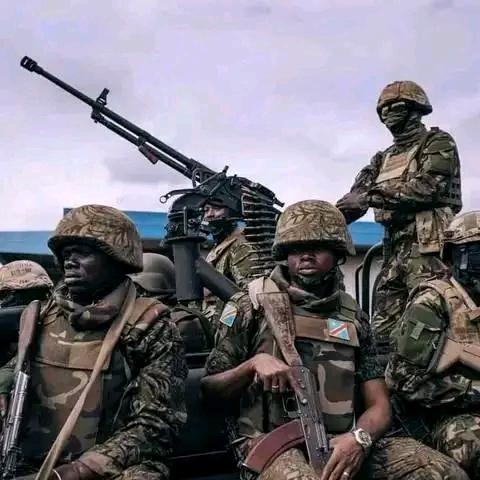By Ollus Ndomu
The conflict in eastern Democratic Republic of Congo (DRC) has taken a dramatic turn. After weeks of intense fighting, the M23 rebel group has declared a ceasefire, citing “humanitarian reasons.” However, this move comes amid reports that the rebels are running low on weapons as the Congolese army, backed by regional troops, escalates its offensive.
Meanwhile, Rwandan President Paul Kagame has spoken to CNN, dodging direct questions about whether Rwandan troops are inside DRC. This comes as South Africa reinforces its military presence in eastern Congo, warning that it will not abandon the DRC in its fight against the rebels.
And in a significant diplomatic move, Congolese President Félix Antoine Tshisekedi and Kagame are set to meet face-to-face at a regional summit in Tanzania, potentially setting the stage for new peace negotiations—or a deeper political standoff.
🔍 Breaking It Down
1️⃣ M23 Ceasefire: A Tactical Retreat or a Genuine Peace Effort?
M23’s ceasefire announcement, effective February 4, appears to be driven more by battlefield realities than humanitarian concerns.
📉 Heavy Casualties & Resource Strain: Reports suggest M23 has suffered significant losses and is struggling with low weaponry supplies.
🚫 No Plans to Capture Bukavu?: M23’s statement explicitly denies intentions to capture Bukavu, contradicting previous intelligence.
💭 Strategic Pause or Long-Term Peace?: History suggests M23 may use this as a regrouping opportunity rather than a step toward permanent peace.
2️⃣ Kagame’s “I Don’t Know” Moment on CNN: A Diplomatic Dodge?
During his Monday CNN interview, President Kagame refused to confirm or deny whether Rwandan troops are inside DRC. However, UN reports estimate up to 4,000 Rwandan soldiers have been embedded with M23.
🤔 Calculated Ambiguity: Kagame’s response is a classic strategic maneuver by neither confirming nor denying involvement, he keeps diplomatic options open.
🚨 Regional Implications: If Rwanda’s presence is officially acknowledged, it could trigger direct regional military intervention beyond South Africa’s current role.
3️⃣ South Africa Stepping Up: A Game-Changer?
President Cyril Ramaphosa’s strong statement signals a shift in regional dynamics. South Africa’s military support for DRC has intensified, especially after over 10 South African troops were killed last week.
🔥 More Advanced Weaponry: South Africa is deploying better-equipped troops, signaling a serious commitment to fighting M23.
🛡️ African Solidarity vs. Rwanda’s Interests: South Africa’s support for Kinshasa could strain relations with Rwanda, increasing geopolitical tensions in the region.
4️⃣ Upcoming Summit: Can Tshisekedi and Kagame Break the Deadlock?
The upcoming East African Community & SADC summit in Tanzania is crucial.
🤝 Tshisekedi & Kagame Finally Meet: After avoiding previous peace talks, the fact that both leaders are attending suggests some diplomatic pressure behind the scenes.
🌍 More Players at the Table: The presence of Cyril Ramaphosa , Yoweri Kaguta Museveni , and Somalia’s Mohamud adds more weight to regional mediation efforts.
🔮 Outcome Uncertain: Will this be a genuine peace effort, or just another round of political posturing?
🚀 What Happens Next?
1️⃣ M23’s ceasefire may be temporary, allowing them to reorganize. If DRC’s military push continues successfully, M23 could be further weakened.
2️⃣ South Africa’s growing military presence could turn the tide, but also risk drawing Rwanda into direct confrontation.
3️⃣ If Kagame and Tshisekedi fail to reach a deal in Tanzania, expect a prolonged and more brutal phase of the conflict.
💭 Final Thought
This conflict is no longer just a battle between Kinshasa and M23, it has evolved into a high-stakes regional showdown involving multiple African powers.
Will this ceasefire hold? Is South Africa’s intervention the key to stability, or could it escalate the situation? Share your thoughts.
📝 About the Author
Ollus Ndomu is a regional geopolitical commentator specializing in African security, diplomacy, and conflict resolution.


